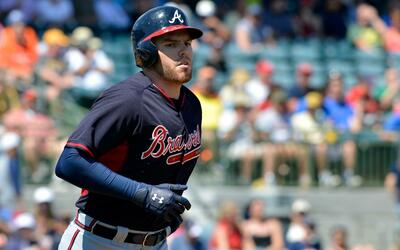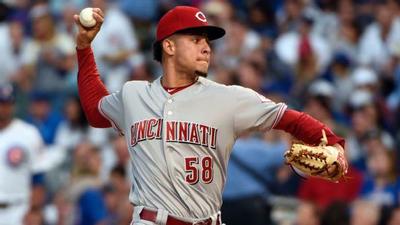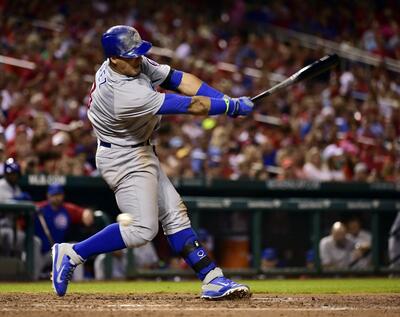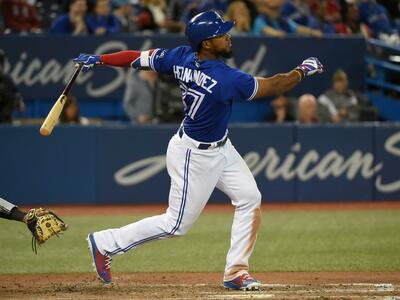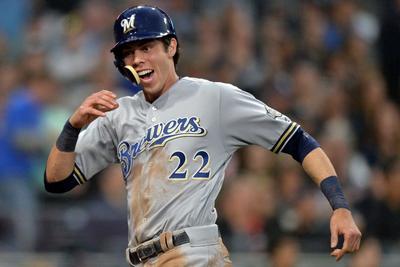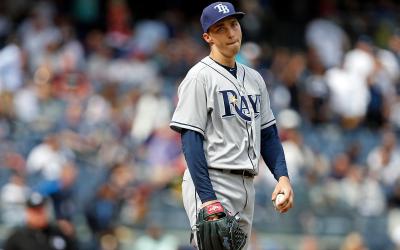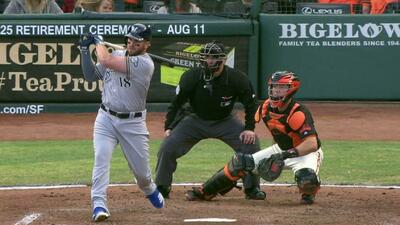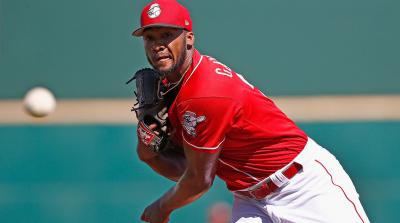A few weeks back we took a look at how to go about evaluating a potential Hitter when looking to make a free agent acquisition. We talked about evaluating specific statistics like EYE, BHIP%, HR Rate, etc and how to interpret a player's sample size as well as their opportunity. This week we'll reiterate the same mantra with regards to evaluating sample size and a player's opportunity, but this time with new statistics to interpret.
As we discussed two weeks ago the two most important things to understand when contemplating pulling the trigger on a free agent acquisition are: 1)Understanding how to gauge a player's Sample Size; and 2) Understanding how to evaluate a player's Opportunity. The theory behind Sample Sizes is that the bigger the sample we have the more likelihood that the results we're drawing from the sample are accurate. Fortunately baseball is a sport that lends itself to statistical analysis, for most players we have hundreds or even thousands of AB's worth of data to evaluate. For these players that we have plenty of data to look at, we should evaluate the smaller sample we're currently looking at in relation to the player's entire past body of work. However, sometimes we're faced with a difficulty in gathering sample sizes on players we haven't seen much of, or evaluate players that have compiled data against varying levels of competition. So how do we sort it all out?
First we want to understand the player's potential Opportunity. If a premier pitching prospect is mired in a middle relief role for the rest of the season, he probably won't offer much fantasy value. Similarly if the prospect is just coming up for a spot start due to injury, he's likely not worthy of using the waiver claim on him. It's important to understand the Opportunity the player's going to be given to perform. A brief example would be Phillip Hughes, the Yankees prized pitching prospect who gathered a lot of preseason hype. Hughes is the real deal and will likely be a mainstay in the Yankees rotation for years to come, but the Yankees gave every indication early in spring training that they wanted to give Hughes plenty of time to start in AAA. They've furthered this inclination by giving spot starts to anybody but Hughes early on in the season. While Hughes time will come, those that utilized a late round pick or "flyer"on Hughes are stuck with a non-productive roster spot. Understanding the player's Opportunity is the most important part in evaluating their potential value. While a Phillip Hughes or a Francisco Liriano may have all the requirements statistically to make a worthy addition to your team, their limited immediate opportunity negatively impacts their overall attractiveness as a potential pickup.
Once we understand the player's Opportunity, we can begin to analyze the player's Sample Size. Before we begin looking at data, we need to understand how much data we have to interpret. For veterans with long major league track records, the data is readily available and because there's more data we have a number of ways to interpret it. Strand %, BHIP%, HR Allowed/9, GB:FB Ratios, K/BB, K/9, Expected ERA, QS%, Deserved Wins, etc are all valuable tools that we can use to evaluate a pitcher with a long track record and thankfully they're all readily available and with a long major league track record we have a large Sample to compare the player's current level of performance to. However, when evaluating a pitcher with less of a major league track record there's a bit more conceptualizing and a bit less statistical analysis. In the past minor league data was a bit more difficult to come by, but now it's pretty readily available with a quick Google search. The problem is two-fold: 1) the more in depth indicators that we provide here at Fantistics aren't as readily available; and 2) Pitching data at the minor league level is a bit more difficult to interpret. There are plenty of differences between major league baseball and minor league baseball and essentially the main difference is overall talent. Secondly, pitchers tend to have an ability to "figure things out"and move quickly up levels. This leads to large changes in statistical trends, for this reason we attempt to simplify things when analyzing minor leaguers. So when evaluating a pitcher at the minor league level we need to ignore the traditional statistics (WHIP, ERA, Record, etc) when evaluating younger pitchers and focus strictly on statistics that are under their control. This means we're primarily looking at statistics involving 3 things: K's, BB's, and HR's allowed.
So we've got the Opportunity part down and we've got a better understanding of how to gather an adequate Sample Size, now we need to begin to dig into the data and gather an understanding of what specifically we're looking for. This is where it's important to understand some of the tools our resident statistician, Anthony Perri, has provided. While evaluating pitchers with a larger major league track record allows us to analyze more types of statistics, I'm going to talk specifically about the things I'm looking for when evaluating ANY and ALL pitchers.
For any pitcher I'm evaluating I want to look at the "controllable"statistics first to see if there's any change in the pitcher's natural skill set. If the pitcher has increased their K Rate, decreased their HRs allowed/9 innings Rate, or Decreased their BB Rate significantly, the pitcher's made significant improvements. For most pitchers I'm ideally looking for a K Rate of at least .70, a HRs allowed/9 innings of less than 1.5 and a BB rate of less than .35 at the major league level. A pitcher with all of these qualifications will likely be dominant. Note when evaluating minor league stats you'd like to set the bar a bit higher with regards to K rates and HR rates (think K rate .90+, HR Rate less than 1.0) due to the difference in competition. If the pitcher meets all 3 of these requirements they're likely owned in leagues unless they're having atrocious luck, so essentially when evaluating a pickup I'm looking for two of these three indicators in the right direction. Regardless of the pitcher's ERA or WHIP or Record, a pitcher with 2 of those 3 indicators heading in the right direction can alter value if they show modest improvement in the last category. A perfect example of this is Adam Loewen for the Orioles. Last year Loewen had a K Rate of .87 and a HR Allowed Rate of .64/9 innings, if Loewen can simply harness his control (awful .55 BB Rate) he can quickly become an elite pitcher. Pitchers with modest major league experience and 2 of these 3 indicators for their career in the right direction are often the premier breakout candidates, because if they simply improve the one other "controllable"statistic, they can become dominant.
In deeper leagues, we don't always have the benefit of looking at pitchers that fit the criteria I outlined above, so what are we looking for if we can't find a pitcher with 2 of the 3 indicators in my pre-established cutoffs? Well first we're looking for a significant improvement in any 1 of those 3 categories mentioned above, an improvement in those categories without a regression in the others will likely result in overall improvement. While improvements in the "controllable statistics"are the best way to show overall improvement, it's not a necessity. Sometimes pitchers can be worthy additions without actually making any great improvements in their "controllable"statistics. In these cases we're looking for a pitcher with a significantly Lower Strand % than their career average or a pitcher with a significantly Higher BHIP% than their career average. In these cases a simple regression to their career averages will improve their overall numbers.
To recap, first we want to make sure the player we're considering for pickup has an adequate opportunity to add value to your team. This means they'll be given an ample opportunity to earn playing time in premier positions which can help your fantasy team. Secondly, we want to make sure we're evaluating their current statistics in relation to their overall track record. For prospects, we want to evaluate only their "controllable"statistics at the minor league level. For proven veterans, we want to primarily evaluate the "controllable statistics"and monitor any improvements in those 3 areas, however we also want to monitor the statistics they have less control over like BHIP%, Strand %, etc to identify any large discrepancies in their current statistics vs. their career statistics. Early on in the season proven veterans may be dropped because of a few poor outings that inflate their ERA's and WHIP's, but the astute owners will pay attention specifically to their K, BB, and HR Rates. If all 3 of those are in line with their career numbers, the pitcher's just suffering from a bit of bad luck and should be fine in the long run. When evaluating younger pitchers coming up try to focus on their minor league K, BB, and HR Rates along with the subjective scouting reports. If the young player has been dominant in those 3 categories at the minor league level, they'll eventually have success at the major league level. While it takes every young player a different amount of time to adjust, the ones that dominate at the lower levels usually find a way to get it done at the major league level. Remember, it doesn't click for every top prospect immediately and most youngsters take plenty of time to adjust to the major league levels, so if you're in a yearly league understand that young pitching can be quite volatile.



